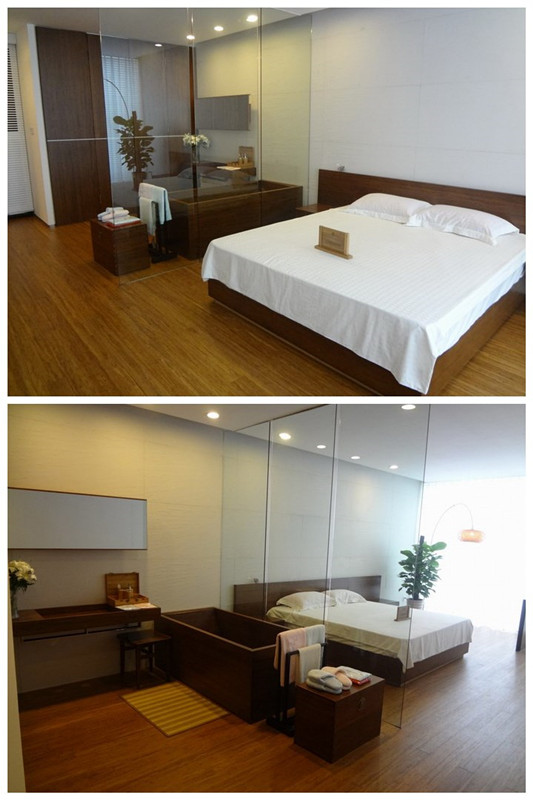Bamboo Flooring : Benefits & Drawbacks
Bamboo is natural and rapidly renewable material rather than wood. It has been through over 30 manufacturing process steps from bamboo tree to flooring. Though, shares many of the positive benefits of a hardwood floor, as well as the drawbacks and vulnerabilities. The more you understand the properties of this material, the better informed you will be when making a purchasing or maintenance decision.
The Benefits of Bothbest's Natural Bamboo Flooring
Ecologically Friendly: Bamboo is made from natural vegetation. The bamboo plant is a highly renewable resource that is able to grow to maturity in as little as 4 to 6 years. This is much faster than any other hardwood trees which can take upwards of twenty years or more to reach maturity.
Easy Maintenance: Bamboo is relatively easy to maintain. You just have to sweep or vacuum it regularly to remove small particle debris. You can also occasional damp mop it, or clean it with a non wax, non-alkaline, hardwood or bamboo floor cleanser. Of course, we recommend oil maintenance once a year to extend lacquer life as long as possible.
Water Resistant: This material is slightly more resistant to water damage, stains, and warping than hardwood materials, although it is still a concern. Note: wet mop will be enough for the water concern, keep bamboo floors away of water as far as possible.
Natural Material: The use of natural materials is an important trend in the construction industry right now. As people are becoming more ecologically conscious they are demanding products that reflect these values. They are also seeking materials and designs that reject the modern cookie cutter world and instead focus on individual personality and natural evolution.
Price: This material is priced at about 20% lower level than most hardwood floors. You will often find bamboo ranging from about two dollars to eight dollars per square foot from stores. You should avoid bargain basement materials as they are often lower quality castoffs.
Durability: There are certain types of bamboo that can be extremely strong, hard, and durable. Natural, un-carbonized bamboo that was properly harvested and manufactured can be as durable as red oak. Strand woven bamboo can be manufactured even harder than that. Strand woven is hardest bamboo flooring, super strong, extremely durable.
Style: Bamboo is a trendy flooring material that can elevate the elegance of a space almost instantly. It has an appearance and a feel that is similar to hardwood and yet, is still distinct and different. This can add an ineffable quality to a room.
Refinishing: Over time bamboo floors may become discolored, scratched, or marred. Luckily the surface of this material can be refinished, sanding it down and then reapplying the finishing coats to give it a fresh new look. The amount of sanding that can be done will be determined by the thickness of the planks used. Each sanding will eat about 2mm bamboo, so bamboo floors can be refinished about 2-4 times.
The Drawbacks Of Bamboo Flooring
Emission of VOC's: Bamboo floor planks are manufactured by slicing or shredding the stalk of the bamboo grass plant, and then adhering the pieces back together using heat, pressure, and a resin based adhesive. This adhesive can release volatile organic chemicals into the air of an interior space over time. Most bamboo floors have this adhesive in them, although the level of adhesive used, and the amount of VOC's emitted will vary depending on how the planks are manufactured.
Scratches: While a bamboo floor is relatively easy to maintain it is nearly impossible to keep it perfect if it is used regularly. There are a wide variety of things that can cause nasty scratches in the surface of a bamboo floor. High heels, pet claws, and furniture legs can all damage the surface. Small grit and tiny particles of sand or dirt will also cause scratches in the bamboo over time.
Water Damage: As mentioned above bamboo is more resistant to water damage than the average hardwood. However it is still a natural material made of organic elements, and as such excessive moisture will cause it to warp or will allow mold to grow. A flood can severely damage a bamboo flooring installation.
Humidity: If the floor is installed in a very humid area, the moisture in the air can cause the floor planks to plump. In a dry environment, the planks can shrink. In both cases cracks in the bamboo will be the result.
Lack of a Grading System: There is no independent system that is used to rate the quality of bamboo materials. Retailers will often sort lots into grade A and grade B materials, but that is an arbitrary system and does not reflect any independent gauge as to the quality of the planks you are purchasing. This makes it imperative to find a quality, reputable flooring dealer to insure that you are getting top quality material.
Lack of Hardness: While natural un-carbonized, and strand woven bamboo flooring is relatively hard and durable, bamboo planks that are darker in color are generally also softer. That is because the carbonization process used to color the wood also weakens it structurally.
Environmentally Ambiguous: Bamboo is a natural material that is made from a highly renewable resource. However there are a number of environmental concerns regarding bamboo. The adhesive used in its construction can contribute to the toxicity of an interior space. There are also some concerns that forests are being cut down and replaced with bamboo fields for commercial purposes. While bamboo definitely has some green qualities it is still environmentally ambiguous in a lot of ways.
All in all, bamboo flooring has many very obvious and easy-to-identify benefits, but it has some of most common drawbacks as hardwood floors, to-take or not-to-take is your decision. It is a duty-bound mission for all of us to protect our earth mother.



 皖公网安备 34180202000049号
皖公网安备 34180202000049号